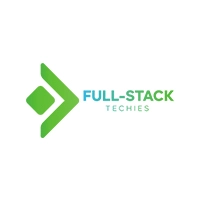Think your organization is too small to be a target for threat actors? Think again. In 2025, attackers no longer distinguish between size or sector. Whether you’re a flashy tech giant, a mid-sized auto dealership software provider, or a small startup, if you store data someone is trying to access it.
As security measures around production environments strengthen, which they have, attackers are shifting left, straight into the software development lifecycle (SDLC). These less-protected and complex environments have become prime targets, where gaps in security can expose sensitive data and derail operations if exploited. That’s why recognizing the warning signs of nefarious behavior is critical. But identification alone isn’t enough; security and development teams must work together to address these risks before attackers exploit them. From suspicious clone activity to overlooked code review changes, subtle indicators can reveal when bad actors are lurking in your development environment.
With most organizations prioritizing speed and efficiency, pipeline checks become generic, human and non-human accounts retain too many permissions, and risky behaviors go unnoticed. While Cloud Security Posture Management has matured in recent years, development environments often lack the same level of security.
Take last year’s EmeraldWhale breach as an example. Attackers cloned more than 10,000 private repositories and siphoned out 15,000 credentials through misconfigured Git repositories and hardcoded secrets. They monetized access, selling credentials and target lists on underground markets while extracting even more sensitive data. And these threats are on the rise, where a single oversight in repository security can snowball into a large-scale breach, putting thousands of systems at risk.
Organizations can’t afford to react after the damage is done. Without real-time detection of anomalous behavior, security teams may not even realize a compromise has occurred in their development environment until it’s too late.
5 Examples of Anomalous Behavior in the SDLC
Spotting a threat actor in a development environment isn’t as simple as catching an unauthorized login attempt or detecting malware. Attackers blend into normal workflows, leveraging routine developer actions to infiltrate repositories, manipulate infrastructure and extract sensitive data. Security teams, and even developers, must recognize the subtle but telling signs of suspicious activity:
- Pull requests merged without resolving recommended changes
Pull requests (PRs) merged without addressing recommended code review changes may introduce bugs, expose sensitive information or weaken security controls in your codebase. When feedback from reviewers is ignored, these potentially harmful changes can slip into production, creating vulnerabilities attackers could exp
- Unapproved Terraform deployment configurations
Unreviewed changes to Terraform configuration files can lead to misconfigured infrastructure deployments. When modifications bypass the approval process, they may introduce security vulnerabilities, cause service disruptions or lead to non-compliant infrastructure settings, increasing risk of exposure.
- Suspicious clone volumes
Abnormal spikes in repository cloning activity may indicate potential data exfiltration from Software Configuration Management (SCM) tools. When an identity clones repositories at unexpected volumes or times outside normal usage patterns, it could signal an attempt to collect source code or sensitive project data for unauthorized use.
- Repositories cloned without subsequent activity
Cloned repositories that remain inactive over time can be a red flag. While cloning is a normal part of development, a repository that is copied but shows no further activity may indicate an attempt to exfiltrate data rather than legitimate development work.
- Over-privileged users or service accounts with no commit history approving PRs
Pull Request approvals from identities lacking repository activity history may indicate compromised accounts or an attempt to bypass code quality safeguards. When changes are approved by users without prior engagement in the repository, it could be a sign of malicious attempts to introduce harmful code or represent reviewers who may overlook critical security vulnerabilities.
Practical Guidance for Developers and Security Teams
Recognizing anomalous behavior is only the first step—security and development teams must work together to implement the right strategies to detect and mitigate risks before they escalate. A proactive approach requires a combination of policy enforcement, identity monitoring and data-driven threat prioritization to ensure development environments remain secure.
To strengthen security across development pipelines, organizations should focus on four key areas:
- CISOs & engineering should develop a strict set of SDLC policies: Enforce mandatory PR reviews, approval requirements for Terraform changes and anomaly-based alerts to detect when security policies are bypassed.
- Track identity behavior and access patterns: Monitor privilege escalation attempts, flag PR approvals from accounts with no prior commit history and correlate developer activity with security signals to identify threats.
- Audit repository clone activity: Analyze clone volume trends for spikes in activity or unexpected access from unusual locations and track cloned repositories to determine if they are actually used for development.
- Prioritize threat investigations with risk scoring: Assign risk scores to developer behaviors, access patterns and code modifications to filter out false positives and focus on the most pressing threats.
By implementing these practices, security and development teams can stay ahead of attackers and ensure that development environments remain resilient against emerging threats.
Collaboration as the Path Forward
Securing the development environment requires a shift in mindset. Simply reacting to threats is no longer enough; security must be integrated into the development lifecycle from the start. Collaboration between AppSec and DevOps teams is critical to closing security gaps and ensuring that proactive measures don’t come at the expense of innovation. By working together to enforce security policies, monitor for anomalous behavior and refine threat detection strategies, teams can strengthen defenses without disrupting development velocity.
Now is the time for organizations to ask the hard questions: How well are security measures keeping up with the speed of development? Are AppSec teams actively engaged in identifying threats earlier in the process? What steps are being taken to minimize risk before attackers exploit weaknesses?
A security-first culture isn’t built overnight, but prioritizing collaboration across teams is a decisive step toward securing development environments against modern threats.
The post 5 subtle indicators your development environment is under siege appeared first on SD Times.
Source: Read MoreÂ



